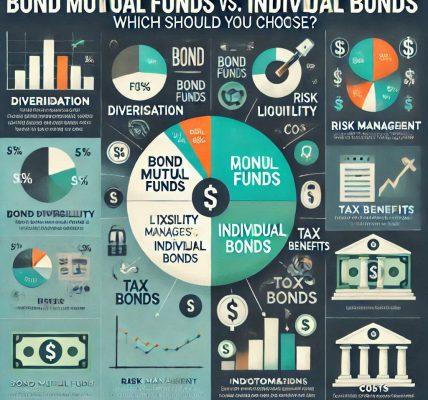Credit rating agencies play a critical role in the global financial markets by providing independent assessments of the creditworthiness of bond issuers. Their ratings influence investor decisions, bond yields, and the overall perception of risk in bond markets. Understanding the impact of credit rating agencies (CRAs) on bond investments is essential for anyone involved in fixed-income securities.
This guide will explore how credit rating agencies operate, the significance of bond ratings, their influence on investment decisions, and the potential risks and controversies surrounding their practices.
What Are Credit Rating Agencies?
Credit rating agencies are independent organizations that evaluate and assign credit ratings to entities that issue debt instruments such as bonds. These ratings reflect the issuer’s ability to meet its financial obligations and indicate the likelihood of default.
Major Credit Rating Agencies:
- Moody’s Investors Service – Established in 1909, known for its detailed credit analysis.
- Standard & Poor’s (S&P) Global Ratings – One of the oldest and most widely recognized agencies.
- Fitch Ratings – Provides international and national credit ratings.
These three agencies dominate the market, often referred to as the “Big Three.” Their ratings are used by institutional and individual investors, governments, and regulatory bodies worldwide.
How Credit Ratings Work
Credit ratings are assigned based on a comprehensive assessment of the issuer’s financial health, business environment, and macroeconomic factors.
Bond Rating Scales
Credit rating agencies use a grading system to classify bonds into investment-grade and non-investment-grade (junk bonds) categories.
- Investment-Grade Ratings (Lower Risk):
- AAA (Highest Quality – Extremely Low Risk)
- AA (High Quality – Very Low Risk)
- A (Upper Medium Grade – Low Risk)
- BBB (Medium Grade – Moderate Risk)
- Non-Investment Grade Ratings (Higher Risk):
- BB (Speculative – Elevated Risk)
- B (Highly Speculative – High Risk)
- CCC, CC, C (Substantial Risk – Very High Default Risk)
- D (Default – Failed to Meet Obligations)
The Role of Credit Rating Agencies in Bond Investments
1. Assessing Risk for Investors
Credit ratings offer a quick and standardized measure of an issuer’s credit risk. Investors use these ratings to gauge the likelihood of timely principal and interest payments.
- Higher-Rated Bonds – Lower risk, lower yield.
- Lower-Rated Bonds – Higher risk, higher yield.
2. Impact on Bond Pricing and Yields
Bond ratings directly affect the pricing and yield of bonds:
- Higher Ratings = Lower Yields: Safer bonds attract more investors, lowering the required return.
- Lower Ratings = Higher Yields: Riskier bonds must offer higher returns to compensate for increased default risk.
3. Investment Eligibility and Regulations
Institutional investors, such as pension funds and insurance companies, are often restricted to investment-grade bonds by law or internal policy. Downgrades to non-investment grade can force these entities to sell, affecting market liquidity.
4. Market Perception and Investor Confidence
Credit ratings shape public perception and confidence in bond issuers. A positive rating supports favorable market sentiment, while a downgrade can cause panic selling.
How Credit Rating Changes Affect Bond Markets
1. Upgrades and Their Effects
When an issuer receives a rating upgrade:
- Bond Prices Rise – Increased demand for the safer asset.
- Yields Fall – Investors accept lower returns due to reduced risk.
2. Downgrades and Their Consequences
When an issuer is downgraded:
- Bond Prices Fall – Decreased investor confidence leads to sell-offs.
- Yields Increase – Higher returns are required to attract new investors.
For example, in the 2011 U.S. credit rating downgrade by S&P, market volatility surged despite the U.S. maintaining strong economic fundamentals.
Risks and Limitations of Credit Rating Agencies
While credit rating agencies provide valuable insights, they are not without limitations and controversies.
1. Conflict of Interest
Rating agencies are often paid by the bond issuers themselves, leading to concerns about bias and inflated ratings.
2. Delayed Response
CRAs are sometimes criticized for being reactive rather than proactive. For instance, during the 2008 financial crisis, agencies failed to downgrade mortgage-backed securities until after the market collapsed.
3. Over-Reliance on Ratings
Investors may rely too heavily on ratings without conducting their independent due diligence. This over-reliance can exacerbate market instability when ratings change.
4. Rating Inaccuracy
Rating methodologies are not infallible. External factors, unforeseen economic shifts, and governance issues can render ratings inaccurate over time.
Strategies for Investors to Navigate Credit Ratings
1. Conduct Independent Research
While ratings are useful, always cross-check with independent financial analysis, market trends, and macroeconomic conditions.
2. Diversify Your Bond Portfolio
Hold bonds across various issuers, industries, and geographies to mitigate the risk of a rating downgrade.
3. Monitor Rating Changes Regularly
Stay updated on potential rating changes and their impact on your bond holdings to make informed investment decisions.
4. Consider Bond Insurance
In some cases, purchasing insured bonds can provide an additional layer of security against defaults.
Legal and Compliance Considerations
It is crucial for investors and financial professionals to adhere to legal frameworks regarding credit ratings and bond investments.
1. Regulatory Oversight
In the U.S., credit rating agencies are regulated by the Securities and Exchange Commission (SEC) under the Credit Rating Agency Reform Act to ensure transparency and accountability.
2. Disclosure Requirements
Investment firms must disclose their reliance on credit ratings and assess the validity of third-party evaluations.
Disclaimer: This content is for informational purposes only and should not be considered financial or legal advice. Always consult a qualified professional before making investment decisions.
Conclusion: The Lasting Influence of Credit Rating Agencies
Credit rating agencies play a significant role in shaping bond market dynamics. Their ratings influence investor decisions, bond yields, and market perceptions. While their evaluations are invaluable, investors must remain cautious of their limitations and conduct independent assessments.
By understanding the impact of credit ratings on bond investments and implementing strategic risk management, investors can better navigate the complexities of the bond market while safeguarding their financial interests.




